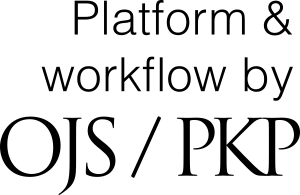Directions, Objectives, and Effects of the Activity of the Security Service in Communist Poland Undertaken Regarding the Jewish Historical Institute (1961–1970)
Zagłada Żydów. Studia i Materiały, No. 13 (2017), Pages: 160-180
Submission Date: 2020-10-17Publication Date: 2017-12-03
 https://doi.org/10.32927/ZZSiM.355
https://doi.org/10.32927/ZZSiM.355
Abstract
An institution maintaining contacts with foreign scholars and the Jewish Diaspora around the world, the Jewish Historical Institute (Żydowski Instytut Historyczny, ŻIH) became an object of interest of the Security Service (Służba Bezpieczeństwa, SB) in the early 1960s. The initial objects of surveillance were the ŻIH Director, Professor Bernard Mark, and his Deputy, Adam Rutkowski, for it was established that they maintained contacts with a number of foreigners and transferred information detrimental to People’s Poland. 13 October 1952 marked the registration of investigation code name ‘Kodak’, within the framework of which the SB counterintelligence (MSW Department II Section V) carried out surveillance of the ŻIH. Aside recruiting agents, mostly among the technical employees of the ŻIH, the SB used technical methods of surveillance (telephone and room tapping, correspondence control) towards the Institute and its employees. There were also several instances of secret entering the Institute to photograph documents. In 1965 all those actions led to a proposition formulated by the SB officer who was in charge of the investigation to accuse the Institute’s management of irregularities in employee remuneration so as to tarnish its reputation and exchange the ŻIH scholarly team for individuals of Jewish nationality loyal to the authorities. Those plans were not realized though, with the MSW Department III Section III, which carried out anti-opposition activity, taking over the surveillance of the ŻIH in 1965. The condition of the surviving operational materials does not facilitate a detailed analysis of the 1967–1968 surveillance of the ŻIH, but it was largely unsuccessful. Paradoxically, the SB learned more about the ŻIH’s situation after state institutions took interest in the Institute’s activity (particularly the Supreme Audit Office [Najwyższa Izba Kontroli, NIK]), beginning with the autumn of 1967. Similarly, research conducted so far does not make it possible to determine the SB’s influence on the activity of those institutions and communist Poland’s policy regarding the ŻIH, but it seems highly probable that the actions aiming at liquidation of the ŻIH undertaken in 1968 were inspired by the SB.
License
Copyright (c) 2017 Author&"Holocaust Studies and Materials"

This work is licensed under a Creative Commons Attribution 4.0 International License.
https://creativecommons.org/licenses/by/4.0
The journal is published under the Diamond Open Access Standard, CC-BY-4.0 Deed - Attribution 4.0 International - Creative Commons
Similar Articles
- Gabriel Finder, The Trial of Shepsl Rotholc and the Politics of Retribution in the Aftermath of the Holocaust , Zagłada Żydów. Studia i Materiały: No. 2 (2006)
- Gabriel Finder, Bernard Mark, the Uprising in the Warsaw Ghetto, and Jürgen Stroop’s Trial , Zagłada Żydów. Studia i Materiały: No. 13 (2017)
- Jacek Leociak, Understanding the Holocaust. A Task for Generations , Zagłada Żydów. Studia i Materiały: 2008: Holocaust Studies and Materials
- Stephan Stach, "The spirit of the time left its stamp on these works." Writing the History of the Shoah at the Jewish Historical Institute in Stalinist Poland , Zagłada Żydów. Studia i Materiały: No. 13 (2017)
- David Silberklang, Józef Kermisz (1907–2005) – A Founder of Shoah Research , Zagłada Żydów. Studia i Materiały: No. 10 (2014)
- Marta Duch-Dyngosz, In Search of Local Memory of the Holocaust. The Case of Commemoration of Jewish Communities in Smaller Towns in Contemporary Poland , Zagłada Żydów. Studia i Materiały: No. 17 (2021)
- Joanna Nalewajko-Kulikov, Three Colors: Grey Study for a Portrait of Bernard Mark , Zagłada Żydów. Studia i Materiały: 2010: Holocaust Studies and Materials
- Ewa Koźmińska-Frejlak, “I’m going to the oven because I didn’t want to give myself up.” Records of the Social Court of the Central Jewish in Poland. An attempt at a gender reading , Zagłada Żydów. Studia i Materiały: No. 19 (2023)
- joanna Nalewajko-Kulikov, Three colours: grey. Bernard Mark’s portrait sketch , Zagłada Żydów. Studia i Materiały: No. 4 (2008)
- Maria Ferenc, Aleksandra Bańkowska, “Could there be any moral compensation for the obliteration of all traces of a thousand years of Jewish existence in Poland?” Unknown writings by Emanuel Ringelblum from 1943 , Zagłada Żydów. Studia i Materiały: No. 20 (2024)
1 2 3 4 5 6 7 8 9 10 11 12 13 14 15 16 17 18 19 20 21 22 23 24 25 26 27 28 29 30 31 32 33 34 35 36 37 38 39 40 41 42 43 44 45 46 47 48 49 50 > >>
You may also start an advanced similarity search for this article.
 English
English
 Język Polski
Język Polski



 https://orcid.org/0000-0001-7776-0647
https://orcid.org/0000-0001-7776-0647

